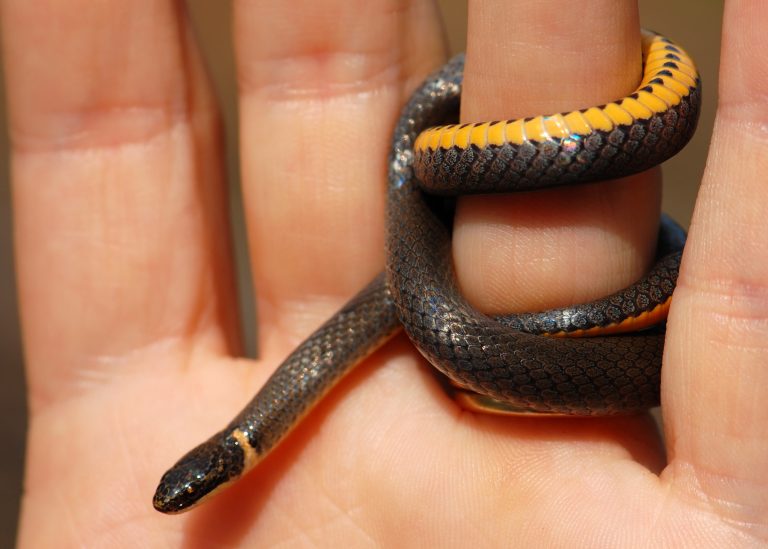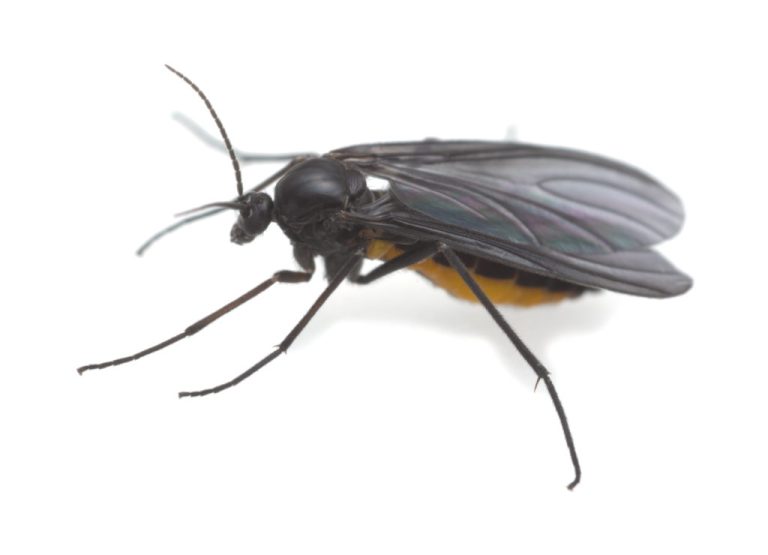What Do Detritivores Eat
There are many different types of detritivores, but they all have one thing in common: they eat detritus. Detritus is dead plant or animal matter that has been broken down into small pieces. This includes things like leaves, twigs, bark, feathers, fur, and even bones.
Detritivores play an important role in the environment by recycling this material back into the soil.
What's a Decomposer? (Saprotrophs and Detritivores)
Most detritivores are scavengers that eat decomposing organic matter. This includes dead plants, dead animals, and feces. Some detritivores are able to break down complex organic matter into simpler substances that can be used as food by other organisms.
These detritivores play an important role in the ecosystem by recycling nutrients back into the soil.
What Do Decomposers Eat
Decomposers are a vital part of the ecosystem. They help to recycle nutrients in the environment and make them available for other organisms. Decomposers are fungi and bacteria that break down dead plants and animals, as well as animal waste.
Without decomposers, ecosystems would be overloaded with nutrient-rich organic matter, which would lead to an increase in disease and pests. Decomposers play an important role in keeping ecosystems healthy.
So, what do decomposers eat?
Decomposers primarily consume dead plant matter, such as leaves and wood. However, they will also consume animal waste products, such as manure and carcasses. In fact, some decomposer species are specifically adapted to breaking down tough materials like cellulose and chitin.
Cellulose is a major component of plant cell walls, while chitin is found in the exoskeletons of insects and crustaceans. These molecules can be difficult for other organisms to digest, but decomposers have enzymes that break them down into simpler compounds that can be used by plants and animals.
In addition to their role in recycling nutrients, decomposers also release carbon dioxide and water vapor into the atmosphere through respiration.
Examples of Detritivores
Detritivores are animals that feed on dead organic matter. They play an important role in the decomposition of plants and animals, and the recycling of nutrients in ecosystems. Common examples of detritivores include earthworms, termites, woodlice, slugs, and snails.
Detritivores are essential for breaking down complex organic molecules into simpler ones that can be used by plants and other organisms. Without them, ecosystems would soon become overloaded with dead plant and animal matter. Detritivores also help to control populations of pests by consuming their carcasses.
Earthworms are perhaps the best-known type of detrivore. They live in soils and consume dead leaves, twigs, and other organic matter that fall to the ground. As they eat their way through this material, they excrete nutrient-rich castings (waste) that enrich the soil and provide food for other organisms.
Termites are another common type of detrivore. These social insects live in colonies consisting of many individuals working together. Termites feed primarily on wood, but they will also consume other types of dead plant material such as leaves and grasses.
Their powerful jaws allow them to break down these materials into smaller pieces that can be digested more easily.
Woodlice are small crustaceans that often live in damp places such as beneath rocks or fallen logs. Like earthworms and termites, they consume decaying plant matter as part of their diet.
Woodlice play an important role in aerating soils and hastening decomposition processes.
Slugs and snails are common garden pests but they too play a role as detrivores! These slimy creatures feed on a variety of dead plant material including leaves, flowers, fruits, and vegetables.
What is the Difference between Detritivores And Decomposers
Decomposers are organisms that break down dead or decaying organic matter and absorb it into the food web. Detritivores are animals that eat detritus (dead leaves, twigs, etc.).
Detritivores play an important role in nutrient cycling and the carbon cycle.
They help to decompose organic matter, which makes nutrients available to plants. This is important because plants need nutrients for growth. Detritivores also help to control populations of pests and diseases.
Decomposers are a key part of the food web. They help to break down dead or decaying organic matter so that other organisms can use the nutrients. Decomposers include bacteria, fungi, and invertebrates such as earthworms and beetles.
There are many different types of decomposers, but they all have one thing in common: they recycle nutrients back into the ecosystem. This is important because it helps to keep ecosystems healthy by making sure that plants get the nutrients they need to grow.
Detritivores That Break down Organic Matter into Simpler Compounds
Detritivores are animals that play an important role in the decomposition of organic matter. These organisms break down dead plants and animals into simpler compounds, which are then used by other organisms as food. This process is essential for the recycling of nutrients in ecosystems and the maintenance of healthy soils.
There are many different types of detritivores, including bacteria, fungi, insects, worms, and even some vertebrates. These creatures vary greatly in size and shape, but all share a common ability to break down complex organic matter into simpler substances.
Most detritivores feed on dead leaves, woody debris, and other plant material.
However, some also consume animal carcasses and feces. In addition to breaking down organic matter, detritivores also aerate soils and help to control populations of harmful microbes.
While they are often unseen, detritivores play a vital role in maintaining ecosystem health.
Without these important creatures, our world would be a very different place!
Are Vultures Detritivores
Vultures are large birds of prey that are closely related to hawks, eagles, and other scavenging birds. There are two types of vultures: Old World vultures, which live in Europe, Africa, and Asia; and New World vultures, which live in North and South America. Vultures are carrion eaters, meaning they feed on the carcasses of dead animals.
While most people think of vultures as dirty birds that feast on rotting flesh, these scavengers play an important role in the ecosystem by cleaning up carcasses that would otherwise spread disease. Vultures have a keen sense of smell that helps them locate food, and they also have powerful stomach acids that allows them to safely digest even the most putrid carcasses.
So next time you see a vulture circling overhead, remember that this bird is performing an important service for us all!
Detritivore Vs Scavenger
The terms detritivore and scavenger are often used interchangeably, but there is a subtle difference between the two. A detritivore is an organism that feeds on dead organic matter. This includes things like fallen leaves, dead insects, and other plant debris.
Scavengers, on the other hand, feed on the carcasses of animals that have died. This can include anything from roadkill to carcasses left behind by predators.
Detritivores play an important role in ecosystems because they help to break down complex organic matter into simpler compounds that can be used by plants and other organisms.
Scavengers also perform an important service by cleaning up carcasses that would otherwise decompose and release harmful bacteria and pathogens into the environment.
While both detritivores and scavengers are beneficial to ecosystems, there are some key differences between the two groups. Detritivores typically live in close proximity to their food source and only eat dead organic matter.
Scavengers, on the other hand, will travel long distances in search of food and will also consume live prey if given the opportunity. In addition, scavengers tend to be much larger than detritivores and have more specialized digestive systems that allow them to digest meat more effectively.
Detritivores Vs Saprotrophs
One of the most important things to know when starting a garden is the difference between detritivores and saprotrophs. These two groups of organisms play vital roles in the decomposition process, which helps to keep your soil healthy and rich in nutrients. Here’s a look at the key differences between these two groups:
Detritivores are animals that feed on dead plants and animals. This includes creatures like earthworms, beetles, and millipedes. They help to break down organic matter so that it can be recycled back into the soil.
Saprotrophs are fungi and bacteria that feed on dead plants and animals. They help to decompose organic matter even further, releasing important nutrients back into the soil.
What is Detritus
Detritus is a word that describes the organic matter that is left behind after something has died. This could be leaves and twigs from a tree, or it could be the carcass of an animal. Detritus is an important part of the ecosystem because it provides food and shelter for many different types of organisms.
Without detritus, the world would be a very different place!

Credit: study.com
What Animals Do Detritivores Eat?
Detritivores are animals that eat dead organic matter. This includes things like decaying leaves, dead insects, and animal carcasses. These animals play an important role in the ecosystem by breaking down this matter and recycling nutrients back into the soil.
Some common examples of detritivores include earthworms, millipedes, slugs, beetles, and ants.
While most detritivores are small creatures, there are some larger ones as well. Vultures, for example, are scavengers that primarily feed on dead animals.
They help to keep the environment clean by getting rid of these carcasses before they have a chance to decompose and attract disease-carrying pests.
What Do Detritivores Eat And Give an Example?
Detritivores are decomposers that eat dead plants and animals. Most detritivores are scavengers, which means they eat things that have already died. However, some detritivores actively kill and consume other organisms.
Detritivores play an important role in the food web because they help to recycle nutrients back into the environment.
One example of a detritivore is the vulture. Vultures are scavengers that feed on the carcasses of dead animals.
They have strong beaks and claws that enable them to tear open tough skin and flesh. Vultures also have a highly developed sense of smell, which helps them to find food.
Where Do Detritivores Get Their Food?
Detritivores are animals that feed on dead organic matter. This includes things like decomposing leaves, dead insects, and even animal feces. Detritivores play an important role in the ecosystem by breaking down this organic matter and recycling it back into the soil.
This helps to keep the environment healthy and clean.
There are a variety of different detritivores, from small insects to larger mammals. Some common examples include earthworms, woodlice, millipedes, slugs, snails, and dung beetles.
These creatures help to break down the complex organic molecules in dead plant and animal matter so that they can be reused by other organisms in the food chain.
Without detritivores, our world would be filled with mountains of rotting garbage. So next time you see a slimy slug or a squirming worm, remember that they’re doing important work!
What is a Detritivore Food Chain?
A detritivore food chain is a type of food web in which detritivores play a key role in the transfer of energy and matter from one trophic level to another. Detritivores are organisms that consume dead organic matter, such as leaves, wood, and animal carcasses. In many ecosystems, they are an important link between producers (plants) and consumers (animals).
Detritus, the dead organic matter that detritivores feed on, is a major source of energy and nutrients in many ecosystems. In forest ecosystems, for example, leaves that fall to the ground are decomposed by fungi and bacteria, which release nutrients that are used by plants. These same fungi and bacteria also break down animal carcasses, returning their nutrients to the soil.
Other examples of detritivores include earthworms, termites, millipedes, slugs, snails, and pillbugs.
Detritivore food chains typically begin with plant litter or other dead organic matter being consumed by microorganisms such as bacteria and fungi. These microorganisms then release nutrients that are taken up by plants.
Animals may eat either plants or other animals further up the food chain; however most ultimately end up eating plant litter or other dead organic matter again (thus completing the cycle).
Conclusion
Detritivores are animals that eat decomposing plants and animals. They play an important role in the ecosystem by breaking down dead matter and recycling nutrients back into the soil. Without detritivores, decomposing matter would build up and eventually choke out other life forms.
There are many different types of detritivores, from bacteria to earthworms to beetles. Each has its own way of breaking down dead matter and extracting nutrients. Some detritivores live in the soil, while others live on the surface of decaying matter.
Detritivores are an important part of any ecosystem. They help to recycle nutrients back into the soil, which helps to keep other plants and animals healthy.




